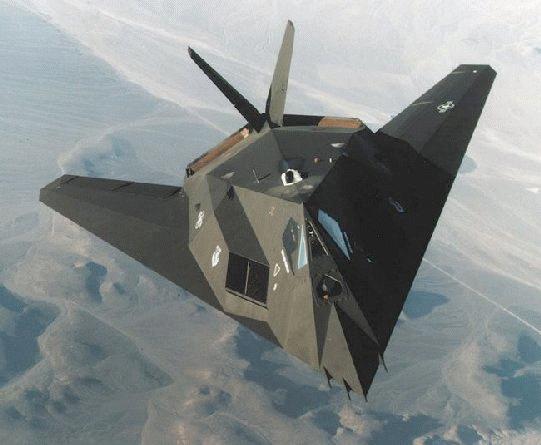
Combat fighters are all tasked, given sufficient combat persistence, to: search, locate, target, interrogate (IFF), coordinate, maneuver and employ weapons - against other aerial objects.
This is a vastly different mission than that of bomber, strike, observation or reconnaissance, which are free to exploit ‘avoidance’ - at all costs.
If the primary targeting/engagement sensor uses the same radio electromagnetic spectrum that a fighter platform is designed to conceal/defeat - could this not incur inherent aerial object (target) detect issue(s) under some/all/specific operational conditions?
The mechanics of ones own radar return signals passing freely (being transmitted then being received) back and forth thru the nose of a radio-spectrum-defeating barrier, (stealth) opposed to an aerodynamic defeating barrier, (a traditional conical nose shape) – is an engineering problem that should not be understated?

According to publicly available information, the F-117 did not possess or employ a radar. The B2 uses synthetic-aperture-class radar for ground detail. By the USAF Association own assertions, the AIM-120 engagement ranges seem to fall well within the detect range envelope, of modern (non radio spectrum) infra-red search and track (IRST) systems?
Air-to-air missile ranges have historically been ‘extended’ by the launch aircraft accelerating into a supersonic ‘dash’ - to give launch weapons more energy at weapon release - to push.
Sustained supersonic flight generates aerodynamic airframe heating due to atmospheric friction (like NASA Space Shuttle during reentry). An aircraft must be designed to operate and function under very high temperatures. Lockheed’s SR-71 Blackbird could fly continuously at Mach 3.1 while portions of its airframe radiated temperatures of ~ 315°C (600°F) - at altitude.
Both the Lockheed F-117 and Northrop B2, are subsonic platforms with non-afterburning, (non-reheat) engines.
To date there has been no responses (built in any known quantities similar) to F-117, B2 or F-22? Wind of an F-117 Nighthawk program must have been known by international intelligence agencies by say - the end of the Ronald Reagan’s first term?
Fighter aircraft with internal weapons that cannot expose (articulate its missiles) to the airstream, to provide unobstructed fields-of-view for missile seeker heads – may have disadvantages in the modern-future: IRST/DRFM/helmet-sighting, air-combat arena?
Remember, even if they see you – they still have to hit you.
The use of plasma technologies have been discussed and possibly tested now for several years. The inherent problem here is - by inducing a high-energy plasma to control opponent radar mechanics; the plasma itself creates it own host of electromagnetic (EM) emissions
No comments:
Post a Comment